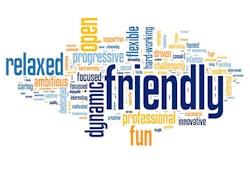Before I attended the Disney Leadership Institute, I never thought much about culture. I didn’t care much about it. I was wrong.
Like many company leaders, I thought culture just sort of happened. It was what it was. The people at Disney showed me how misguided I was.
A company’s culture is really just shared values. These are the values of owners, leaders, and the rest of the team. A value, such as “honesty,” results in certain behaviors. Value honesty and you will not lie or try to deceive a customer. Value honesty and you will not cheat your employer. Value honesty and you will be upfront with those you work with (though you can still be tactful). When one values honest, certain behaviors are expected.
Behaviors are actions. From actions, come results. Working backwards, behaviors drive results. Since values imply certain behaviors, values also drive results. Culture, as the collection of shared values, must also drive results.
When the people at Disney explained culture this way, its importance seemed obvious to me. I mentally starting kicking myself. If culture is something that you just let happen, then your company’s results are also something that just sort of happens. If you are blessed with a good culture, you can expect good results. If the culture gets corrosive, results will suffer accordingly.
The unstated key is the values must be “shared.” When values are not shared, the culture is disjointed. It appears that people are working at cross purposes. Nothing is more frustrating for a leader than leading people with values inconsistent with your own. If you find yourself complaining about employees and wondering why the heck one of them did something, what was another one thinking, then your values are probably not in sync.
What can you do about it? Start by identifying the values you want within your company. This is not a solo process. Involve your leadership team. In the end, though, you do need to agree with the values selected.
Once the values have been identified, define accompanying behaviors. Especially for the most important values, think of hypothetical situations that reveal desired behaviors. Bring up the hypotheticals during interviews. For example, you might ask a prospective hire to recall a time when he was given too much change. What did you do? If he cannot think of a time, create a situation. Ask, “If you’re at a local convenience store that’s known for its high prices and realize after you leave that the clerk gave you a quarter too much, what would you do?” “What if it was a dollar?” “Ten dollars?”
Culture is too important to just let it happen. It should be designed. It is designed by identifying the shared values for the company and hiring to those values by doing your best to verify candidate behaviors that are consistent with the values. When this happens, less management is required. You will not need to watch people if they are governed by the right value set.
After returning from the Disney Leadership Institute, the Service Roundtable’s leadership team identified our corporate values during our annual planning retreat. Here they are…
Service Nation Values
These are the twelve values of Service Nation. They are shared values of our team. They represent our culture. They are a requirement to be one of our teammates.
Integrity
We do the right thing. We do the right thing naturally, without being told to do it.
Honesty
We tell the truth. We do not lie, cheat, steal, or tolerate those who do.
Creativity
We make new stuff. We build. We add things to the world that did not previously exist.
Innovation
We find ways to do things better. We are adept at applying new technology and utilizing existing technology in new ways. We revolutionize.
Community
We enable relationships. We create environments where relationship building thrives.
Profitability
We make money for ourselves and help others make money for themselves.
Growth
We improve year-after-year. We improve as a business. We improve as individuals.
Fun
We smell the coffee… and the roses… and the wine. We make business enjoyable. That’s why jerks need not apply.
Self-Direction
We take initiative. We are self-starters who see problems and fix them, who see opportunities and exploit them.
Service
We put others first.
Results
We get the job done.
Flexibility
We work as a team to balance the demands of work and life.
It was not an easy process to settle on these. It required several iterations. Once they proved acceptable to everyone, we made posters and placed them around the office. Each month we pass out a “value card” that stresses one value.
The process was healthy for us. It will be healthy for you. Moreover, once your values are identified and your culture is designed, you will find your company becoming more harmonious, more nibble, and more efficient. It’s the difference between a crew boat where everyone is pulling oars at their rhythm and one where the rowers are in sync.
###
If you would like to learn more about the Service Nation Alliance best practices group for contractors who are seeking high levels of success, call 877.262.3341 or visit ServiceNationAlliance.com.
About the Author
Matt Michel
Chief Executive Officer
Matt Michel was a co-founder and CEO of the Service Roundtable (ServiceRoundtable.com). The Service Roundtable is an organization founded to help contractors improve their sales, marketing, operations, and profitability. The Service Nation Alliance is a part of this overall organization. Matt was inducted into the Contracting Business HVAC Hall of Fame in 2015. He is now an author and rancher.
